
S T O R Y
“Tom’s Diner” is a song by Suzanne Vega; a restaurant in New York City; and a website that delves into the history of Vega’s song, including its mythical role in the development of the MP3, and the unprecedented ways that it has permeated pop culture since its release in
The diner that Vega describes in the song is actually called Tom’s Restaurant, which she would frequent when she was a student at Barnard College in the early
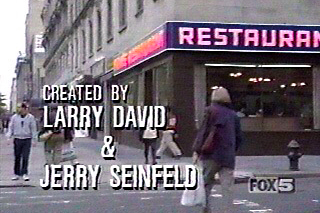
Vega was inspired by a photographer friend who once told her that he felt as though he saw the world through a pane of glass. In a 2008 blog post for the New York Times, she wrote, “This struck me as romantic and alienated, and I wanted to write a song from this viewpoint.” She imagined the song with piano in the background but didn’t know how to play the instrument, so she kept it a cappella. Later, during live shows, she discovered that it was an effective way to make audiences quiet down, and would often use it as an opening song.

Although Vega wrote “Tom’s Diner” in

That album later found its way to the Fraunhofer Institute for Integrated Circuits in Erlangen, a town in the southern German state of Bavaria. An electrical engineer named Karlheinz Brandenburg was working on compressing audio files so that they could be transmitted over the new digital telephone lines that were being installed across Germany. Brandenburg had developed an algorithm that could eliminate the parts of a sound recording that were imperceptible to the average human ear, thereby reducing the size of the audio file.
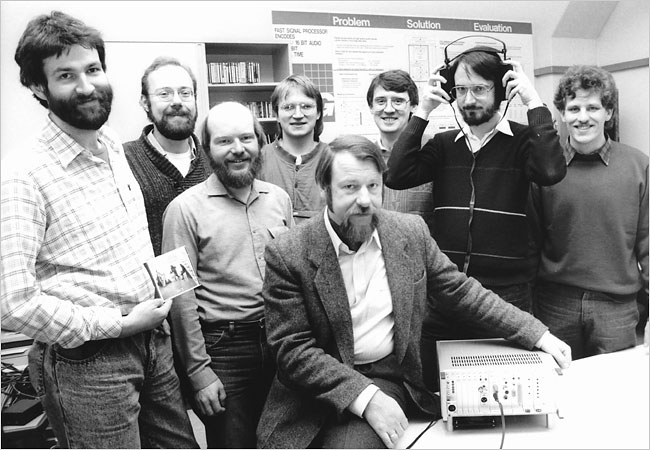
At the Fraunhofer Institute, Brandenburg and his team of engineers were testing the algorithm on different types of music. It seemed to be working pretty well, until they encountered a dilemma in
Unlike most instruments, Vega’s warm vocals did not fare well when compressed by the algorithm:
With the help of “Tom’s Diner,” which they listened to hundreds of times, Brandenburg and his team were able to refine their algorithm, which became known as optimum coding in the frequency domain, or OCF. They submitted their technology to the Moving Picture Experts Group, or MPEG, which sets international standards for digital multimedia formats.
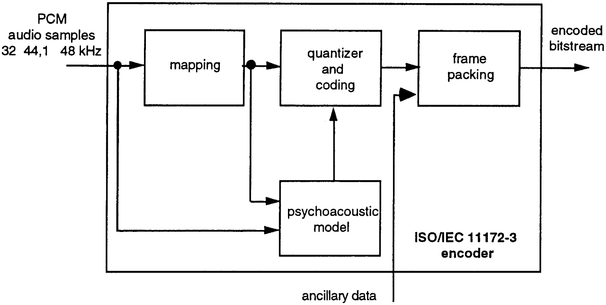
After intense politicking, a compromise was reached in

But then, along came the World Wide Web and Windows 95. Brandenburg and his team jumped at the opportunity to make their compression method the internet audio standard. On July
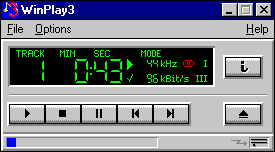
To promote their invention, the Fraunhofer Institute developed and released MP3 players and decoding software as free-to-use shareware on the Internet, such as WinPlay3, and didn’t immediately go after freeware authors. By the late 1990s, the MP3 had become the de facto standard for digital audio, and the Fraunhofer was profiting handsomely from licensing fees. Here’s Brandenburg again, on the Internet History Podcast:
But like with any technology, there were unanticipated consequences:
Brandenburg tried to warn the music industry, but they didn’t listen, and the unprotected, pirated MP3 won out. But that’s a story for another day.

Let’s return to Suzanne Vega. One day in 2000, after dropping off her daughter at nursery school, she was approached by a father who congratulated her on being the “Mother of the MP3.” She had no idea what he was talking about. He told her about an article he had read describing how Karlheinz Brandenburg had fine-tuned his compression algorithm using “Tom’s Diner.” It was hyperbolically titled, “Ich Bin Ein Paradigm Shifter: The MP3 Format is a Product of Suzanne Vega’s Voice and This Man’s Ears.” Several years later, Vega was even invited to the Fraunhofer Institute, where Brandenburg and his team showed her how awful “Tom’s Diner” had sounded before they refined their algorithm.

However, one must keep in mind that the impact of “Tom’s Diner” has often been overstated, to the point of becoming musical lore. Other recordings were prominently used in MPEG listening tests, including Tracy Chapman’s “Mountains O’ Things” and Ornette Coleman’s “In All Languages,” and Brandenburg loathes being called the “Father of the MP3.” According to media scholar Jonathan Sterne, the lone-inventor-encounters-muse archetype “presses all the romantic buttons on the machine that makes histories of technology, and “like all urban legends, [it] has grown and mutated.” But this transmogrification also speaks volumes about our attitudes toward technology, male genius, and authorship, as well as our preference for simple answers.
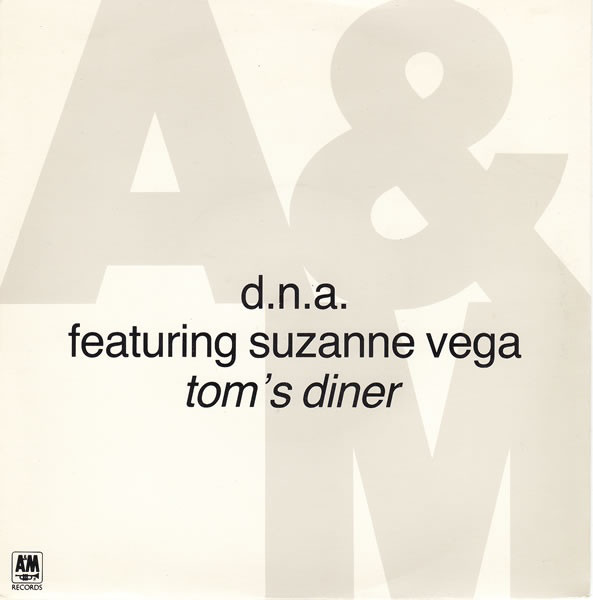
This audiophilic foray was just one of the many surprising journeys that “Tom’s Diner” took upon its release. In
“Tom’s Diner” was so appealing and irresistible that musicians from all kinds of genres would send Vega their own takes on it. She liked some of them so much that in
Another one of Vega’s favorites was a reggae interpretation by Michigan & Smiley, a Jamaican dancehall duo:
In her New York Times blog post, Vega described putting together the compilation album as a “logistical nightmare,” because she had to go back to the musicians who had taken her song without permission, and ask for their permission to use their version of her song on the album. Since then, dozens of more artists have reinterpreted “Tom’s Diner”— but since we can’t get to all of them, we’ll just listen to the more interesting ones.

In
That same year, a Dutch Eurodance group called T-Spoon released “Tom’s Party,” which sounds like what would happen if Tom’s Diner was converted into Tom’s Discotheque:
Speaking of parties, in 2004, the rap duo Park Slope released “La Dee Da Dee (We Like 2 Party),” which featured The Hood$tars, a short-lived group that included Nicki Minaj, among others. The melody of “Tom’s Diner” is tucked into the song, recurring several times:
In 2007, the footwork producers DJ Rashad and DJ Spinn sampled Vega’s vocals in “Tekz Diner,” which has never been formally released and can be found only on YouTube. “Tekz” most likely refers to Teklife, a pioneering footwork crew that Rashad and Spinn co-founded in Chicago in the
Also in 2007, a posthumous compilation of 2Pac’s greatest hits was released. Included in Best of 2Pac, Part 2: Life was a previously unreleased song called “Dopefiend’s Diner,” in which 2Pac raps to the melody of “Tom’s Diner.” As you can probably gather from the title, the diner is very different from the one on
In 2009, before he gained his reputation as a prolific sampler, the rapper Drake released a mixtape called Heartbreak Drake 2. In a track called “Juice,” Drake raps over the melody of “Tom’s Diner,” but this time, the subject matter is his superiority:
In 2
It would be remiss not to mention Giorgio Moroder’s 2
We’re going to end with Ghost in the MP3, a project by the artist and composer Ryan Maguire. In a song titled “moDernisT,” which is an anagram of “Tom’s Diner,” Maguire salvaged the sounds that were eliminated by the MP3 encoding process, resulting in haunting traces of the original song.

In a paper that Maguire published in the 2

We hope you enjoyed this wild ride through the past three-and-a-half decades of sonic culture. It’s astounding how much history can be woven into just one song, tracking the rise of both new technologies and new genres. Why “Tom’s Diner,” you might ask? It probably goes back to the melody, which hit Suzanne Vega as she was walking down Broadway when she was 22 years old. No matter who you are, it worms its way into your ears and refuses to leave. The story of “Tom’s Diner” is still being written; many more renditions will surely appear. Here is Ryan Maguire’s, from 2
D E E T S
Tom’s Restaurant has been serving the Morningside Heights area since the
Location
2880 Broadway
New York, NY
Hours
Tuesday –Thursday: 7 am –1 am
Friday – Monday: Open

